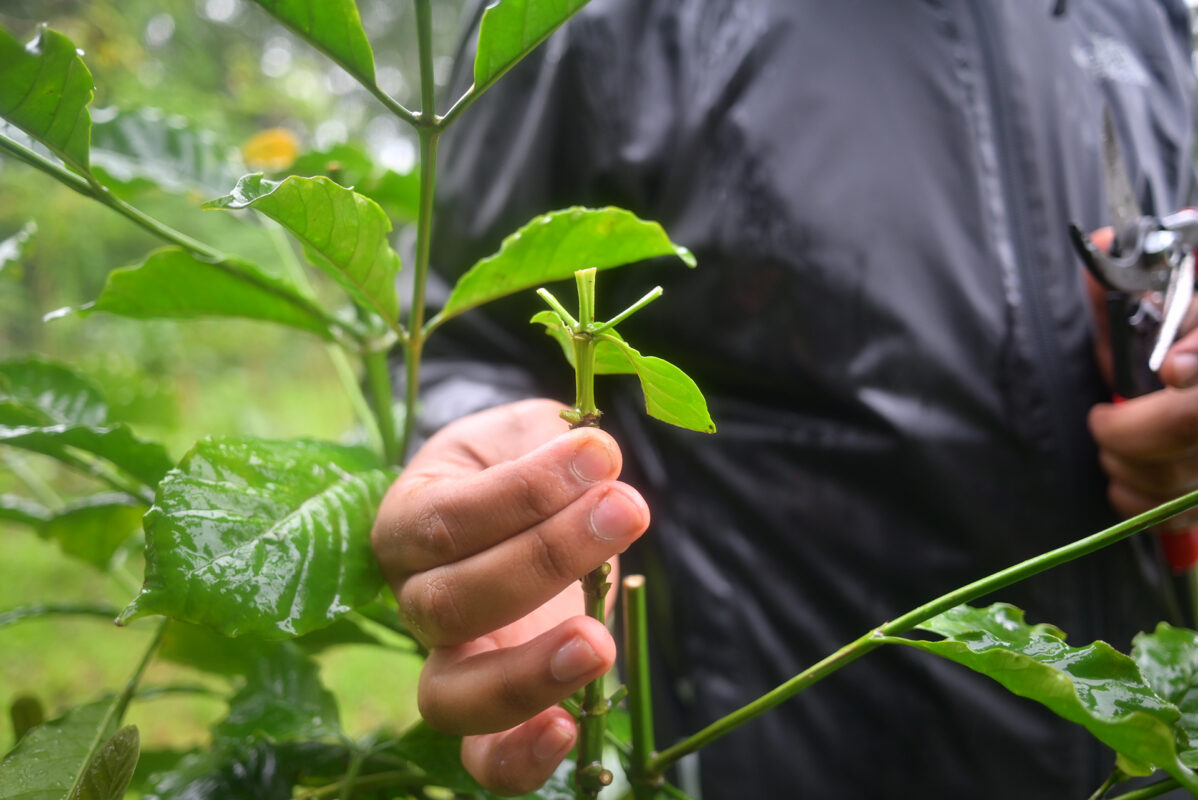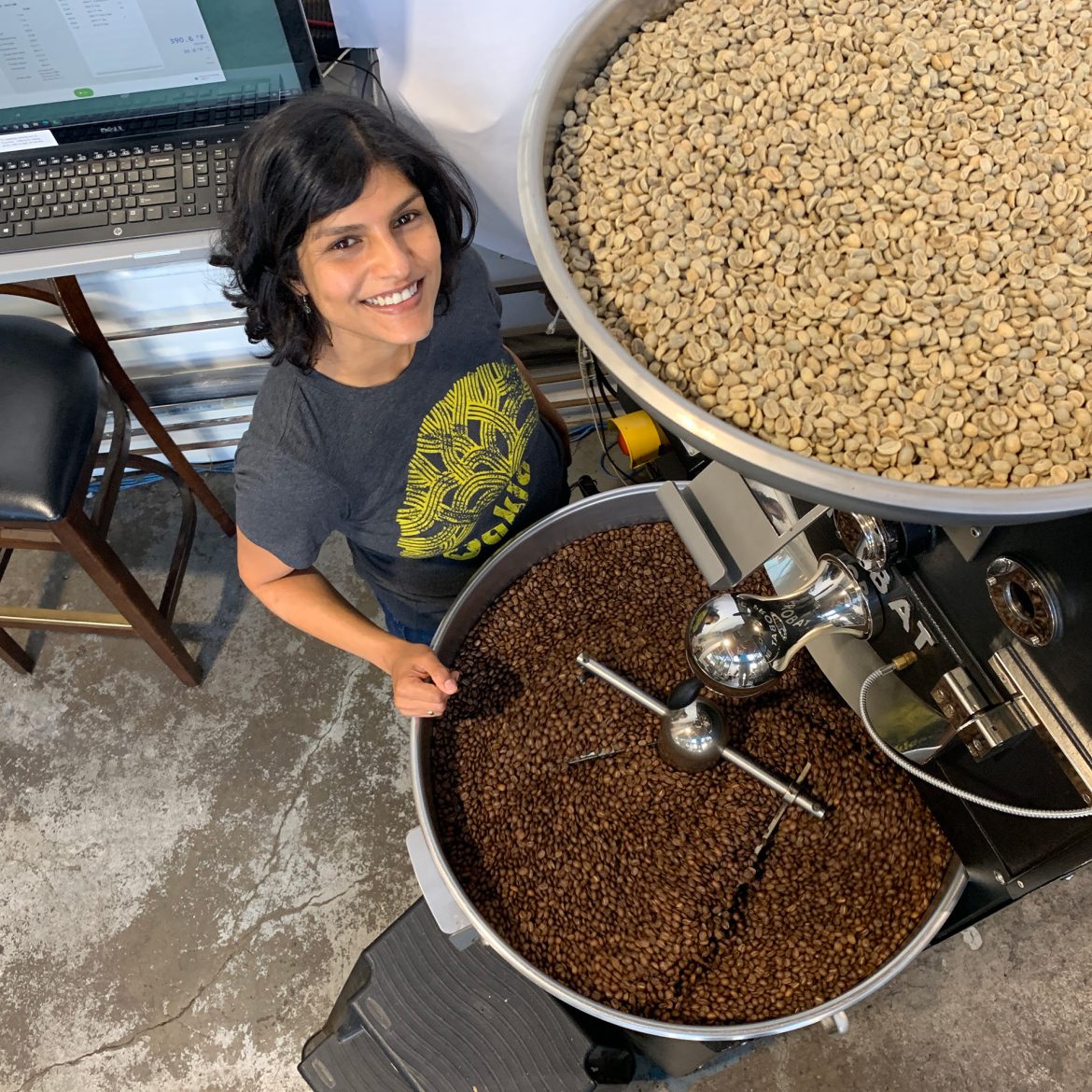At the beginning of my specialty coffee journey—a wee coffee lover who knew little more than Starbucks Blonde Roast—I was soon exposed to the concept of coffee branded by simple origin. You know what I mean: we’re talking mainstays like Hawaiian Kona, Jamaican Blue Mountain, and Indian Monsoon Malabar. These coffees were each fascinating to me in their uniqueness, even though I knew nothing at the time about trademarking origins or what specialty processing meant.
Soon my specialty coffee journey progressed, and I began to stray away from these coffees, which seemed to be from a simpler time. Why drink a coffee named for a region when you could drink a coffee from a specific farm, and a specific farmer, working with a very particular coffee variety?
Perhaps your own journey drinking coffee followed a similar trajectory. But somewhere along the way, perhaps a dozen or so year later, I found myself buying a fresh bag of Indian coffee for the first time in a long time. This wasn’t just Monsoon Malabar; it was Indian specialty coffee, which I knew to be the case because I’d purchased it from a good roaster, among other high-quality roasters, and it came in an attractively designed bag. (Yes, even coffee writers can be swayed by marketing.)
The coffee was roasted by Kaveri Coffee Works, which is based in Berkeley, California. It got me thinking about Indian coffee—and what I might have overlooked around coffee from India over the last decade or so. Kaveri is owned by a Tanya Rao, and she and I spoke at length about India as a coffee growing origin. Rao is a third generation coffee roaster—a rare thing—and she grew up in Bangalore, the capital of the Indian state of Karnataka, which accounts for over 70% of the country’s coffee production. She immigrated to the US for higher education, and after a few career detours, she returned to her coffee roots. Today Kaveria sells only coffees roasted in India. She explains, “By just focusing on one region, I am able to go deep into the rich history and culture of Indian coffee and showcase a wide variety of flavor profiles to meet many different tastes.”

Now, I want it to be known here that I am not saying that India is a new origin, a discovered one, or somehow unknown in the industry, because it’s not. India is the seventh-largest coffee-producing country in the world, with an export market of $1.29 billion (it surpassed the billion-dollar mark at the end of 2024). But its coffee is largely exported to countries in Europe (Italy, Germany, and Belgium), with the US share at just over 5%—compared to other parts of the world, Indian-grown coffee in the United States is relatively scarce.
Kaveri is not the only US company focusing on Indian coffee. In Palm Beach, Florida, Chik Monk has a fully integrated supply chain—a rarity in specialty coffee—from seed to cup to cafe. Founded in 2019, the married co-founders each brought something to the table: Nandini Jayaprasad is a fifth-generation coffee professional and David Beil had family experience in fine dining seafood restaurants, import/export, and fully integrated supply chains. When the duo finally had the courage to start Chik Monk, says Beil, they decided to follow the same principles as fine dining, which was taking a high-quality product, branding it, drumming up consumer education awareness, and then managing the quality across the product chain.
Chik Monk imports coffee grown by Nandini Jayaprasad’s father, H.B. Jayaprasad on his Balekola and Balupet Estates. H.B. Jayaprasad was one of the individuals who helped India transition from a state-run pooling system to a free market in 1994, thus allowing single estates to self-brand, share their own stories, and adopt new methods. His estates are situated at around 1,300 MASL, on steep slopes beneath a thick canopy of trees, surrounded by native plants such as cardamom, jackfruit, and mangoes. Instead of deforesting for short-term yields, deciding to let the rainforest grow within the land has allowed HB Jayaprasad to create a natural, sustainable ecosystem that also plays host to Indian elephants as well as gaur, which are sometimes called “Indian bison,” and are heavily endangered.

Having grown up on her family’s farms and observed the full and intensive producing process, Nandini Jayaprasad felt a personal connection and desire to spread the message of quality coffee from India. She’s found that India’s coffee reputation in Europe has long been known as high quality, but in the US, the origin’s reputation is nascent. “In the US, people are still learning about Indian coffee,” she tells me. “But everyone that’s tried it has loved it, and we’ve had excellent feedback.” Oftentimes, the customers think that India only grows tea and are surprised by how much they enjoy the coffee. Chik Monk has been organically building a local fan base and is now operating at full capacity.
South India Coffee Company (SICC) is an India-based vertically integrated specialty coffee enterprise. Founded in 2017 by married duo Komal Sable and Akshay Dashrath—fifth-generation producers who also manage Mooleh Manay Estates (where the coffee I purchased was grown!)—SICC boasts a network of over 30 coffee growers of all sizes, connecting them to roasters and importers abroad. Sable says new growing partners are holistically evaluated, beyond relying on cup score, for qualities such as a commitment to ecological resilience, a strong sense of community integration, and openness to post-harvest process experimentation.
Unique to a supply chain company is the research and development wing, known as SICC Labs. The lab is an important part of SICC’s work, says Sable, with the bulk of it focusing on “low-intervention Coffea species like Excelsa, exploring genetics that can withstand the realities of climate change.” Utilizing existing hands-on, field-level experience, SICC Labs’ goal is to “bridge scientific research and farmer-led application in a way that’s both rigorous and accessible.” Sable sees climate adaptation as an opportunity, and not just a threat, adding that “Indian growers are already dealing with erratic rainfall, pest pressures, and yield instability, but they’re also innovating rapidly, with post harvest processing, and climate adaptability.”

When asked what the main challenges were in India’s visibility as a specialty origin, Sable sums it up as perception lag. “India doesn’t always fit the legacy narrative of ‘romanticized origin’ in the specialty industry,” she says. “We’ve been pigeonholed as commercial even though we’re producing experimental naturals, cultivating wild species, and rethinking soil-to-cup economics.”
Beil compares the challenge as similar to Vietnam’s rebranding as a specialty origin and I can see the parallels, too: both are high-volume, coffee-producing countries with a historical reputation in the specialty coffee industry as commodity and low-grade.
Rao says that availability and sourcing were among her biggest challenges. She found it difficult to obtain full traceability and often connected with producers through Instagram or via several degrees of mutual contacts.
And then there’s the classification system the Coffee Board of India uses, plus the lab-grown, hybrid variety names. “These varieties have names like Cauvery, Chandragiri, Selection 795, Selection 9, and are not known to US roasters and consumers,” she says. “It’s like a foreign language in need of translation.” Between growing up in India and spending time in the US, Rao is uniquely positioned and feels compelled to be a translator and ambassador for Indian coffee.
Over the past five years, she has witnessed a significant and positive shift in the visibility of Indian coffee in the US, marked by increased cultural representation in the industry and growing interest in its origin. Combined with the increase in exports and a domestic cafe market expected to double by 2030, India’s presence in specialty coffee is on an upward trajectory. And the coffees? With the right care and roasting—and the work of dedicated professionals like those I spoke to for this story—they’re absolutely delicious.
Jenn Chen (@thejennchen) is an Editor At Large at Sprudge Media Network. Read more Jenn Chen on Sprudge.
All photos courtesy of their respective companies.




